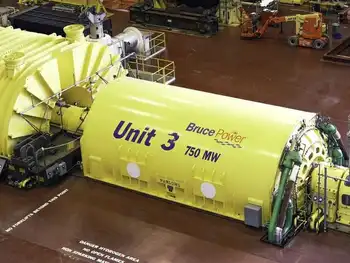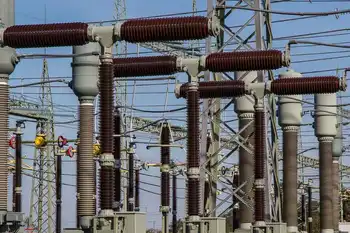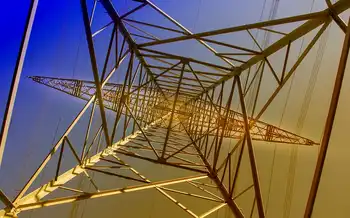Connecticut Clean Energy Fund Selects 68 Megawatts of Projects Incorporating FuelCell Energy's Ultra-Clean Power Plants
The state's two electric distribution companies will review CCEF's recommendations and perform additional analyses leading to their selection of the projects to receive long-term power purchase agreements. Under the 2003 state energy act, the utilities are required to enter into long term power purchase agreements with developers to purchase not less than 100 MW of Class I renewable energy.
Specific FuelCell Energy projects selected by CCEF include:
- ERG Milford, LLC: A 7.9 MW DFC-ERG(tm) project that pairs 7.2 MW of DirectFuel Cell power plants with a 1.5 MW pipeline turbo expander. FuelCell Energy is partnered with Enbridge, Inc. and Southern Connecticut Gas Company for the project which is expected to achieve an electrical efficiency of approximately 60 percent. When natural gas is transferred from transcontinental pipelines to local distribution pipelines, the gas cools. The DFC-ERG system will capture the heat byproduct from FuelCell Energy's DFC3000 fuel cell and use the heat to warm the gas to its proper distribution temperature. Excess power from the DFC-ERG system will be exported to the grid.
- Elemental Power Group, Danbury: A 19.6 MW project consisting of 8 DFC power plant units which incorporate organic rankine cycles to convert excess thermal energy from the fuel cells to deliver additional low-emissions electrical output. Achieving an electrical efficiency of over 47 percent, the project will deliver electrical grid power to Connecticut Light and Power for the southwestern part of the state. Elemental Power Group, LLC, an entity formed by Marubeni Power of New York and Catamount Energy of Vermont are the developers for this project.
- Hospital Energy Development LLC./EMCOR: A 4.6 MW project for Stamford Hospital will use 2 DFC3000 power plants in a combined heat and power application providing lower cost thermal energy to the hospital as well as ultra-clean electricity to the utility grid. The project is expected to achieve a combined heat and power efficiency and will be developed by EMCOR Energy Services and Hospital Energy Development LLC.
- Hospital Energy Development, LLC./EMCOR: A 2.3 MW project for Waterbury Hospital that will use 1 DFC3000 power plant in a combined heat and power applications providing lower cost thermal energy to the hospital as well as electricity to the grid. The project is expected to achieve a combined heat and power efficiency of over 60 percent.
- Elemental Power Group, Bridgeport: A 19.6 MW project consisting of 8 DFC power plant units which incorporate organic rankine cycles to convert excess thermal energy from the fuel cells to deliver added low-emissions electrical output. Achieving an electrical efficiency of over 47 percent, the project will augment electrical grid power provided by United Illuminating Company for the southwestern part of the state. Elemental Power Group, LLC, an entity formed by Marubeni Power of New York, and Catamount Energy of Vermont are the developers for this project.
- Bridgeport Fuel Cell Park: A 13.7 MW project consisting of 6 DFC3000 power plants that will deliver power to the United Illuminating Company in an area key to easing the power-constraint challenges in southwestern Connecticut. The project is using a remediated brownfield site in a key urban development area. Project participants include FuelCell Energy, PurePower, LLC and Pinpoint Power, LLC.
Timothy Bowles, Chairman of the Connecticut Clean Energy Advisory Committee, said, "We were extremely pleased with the quality of the projects that were submitted to CCEF for consideration under Round 2 competition. It was a challenge to narrow down the field to the 11 that we selected, and it is our hope that the utilities will move forward with long-term contracts with all of the projects. If all 11 projects are indeed launched, Connecticut's citizens will benefit from the implementation of clean electricity generation on a significant scale."
"These recommendations demonstrate Connecticut's leadership in advancing superior renewable ultra-clean energy solutions and in particular recognizing the value of the multi-MW projects we proposed," said R. Daniel Brdar, Chairman and CEO of FuelCell Energy. "These selections are a major milestone for the whole industry, firmly establishing fuel cells' role in deploying ultra-clean energy capacity. With their 24/7 reliability, fuel cells can solve electric grid congestion while reducing the need for new transmission and distribution investment. Our fuel cells provide this power with virtually no emissions, quietly and economically."
In a recent formal vote the CCEF selected the sites under Connecticut's Project 100 Program. Established under state law, Project 100 provides contracts with terms of 10 to 20 years for power projects - providing a predictable revenue stream for project developers and financiers. Project 100 proposals were submitted to the CCEF pursuant to a competitive bidding process and selections were made based on the technical attributes and cost of the various proposals.
Brdar continued, "The sales value of these projects to FuelCell Energy is more than $200 million if all projects are accepted. This volume will enable additional cost reduction and the expansion of our facilities in Connecticut and other locales."
Related News

Bruce Power cranking out more electricity after upgrade
OWEN SOUND - Bruce Power’s Unit 3 nuclear reactor will squeeze out an extra 22 megawatts of electricity, thanks to upgrades during its recent planned outage.
Similar gains are anticipated at its three sister reactors at Bruce A generating station, which presents the opportunity for the biggest gains, due to a design difference over Bruce B’s four reactors, Bruce Power spokesman John Peevers said.
Bruce A reactor efficiency gains stem mainly from the fact Bruce A’s non-nuclear side, including turbines and the generator, was sized at 88 per cent of the nuclear capacity, Peevers said.
This allowed 12 per cent of the energy,…





